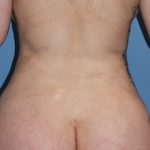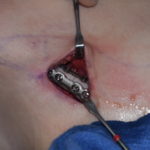There are many reasons why patients seek surgical changes to their faces. With more than twenty facial regions that can be altered, the possibilities for enhancement are virtually endless. Broadly speaking, facial cosmetic surgery falls into two categories: anti-aging procedures and structural surgery—a distinction that largely mirrors the difference between soft tissue and hard tissue operations.
Anti-Aging vs. Structural Surgery
Anti-aging facial surgery encompasses well-known procedures such as facelifts, eyelid lifts (blepharoplasty), and skin resurfacing. These interventions address the visible effects of aging, time, and sun exposure. They primarily target the soft tissues, especially the outer skin layers, to restore a more youthful appearance.
Structural facial surgery, by contrast, operates at a deeper level—modifying the bone and cartilage to reshape the face’s framework. While rhinoplasty has long been the most common structural procedure, today’s advancements now include everything from forehead augmentation and brow reduction to chin and jaw angle enhancement.
Psychological Dimensions: Familiar vs. New
The psychological contrast between these two categories is profound. Anti-aging surgery aims to restore a familiar version of the self—how a person used to look. While the idea of surgery and recovery may cause anxiety, the anticipated result often provides comfort through familiarity.
Structural facial surgery, on the other hand, introduces something entirely new. It represents a transformation of one’s lifelong facial identity. This unfamiliarity can evoke a more complex emotional response—one that patients must be prepared to navigate.
Observations from Practice
Having performed countless structural procedures—from rhinoplasty to full jawline reconstruction—I’ve seen firsthand the evolving psychological landscape in this field. Although many principles remain constant, emerging technologies and biomaterials have expanded what is surgically achievable, creating new emotional and psychological considerations.
The Importance of Communication and Realistic Expectations
A critical part of planning any structural procedure involves clearly understanding the patient’s goals. Visual aids—such as annotated photos, selfies, and even images of celebrities—are common and helpful. However, excessive reliance on model or celebrity photos may signal unrealistic expectations. While patients often claim they don’t expect to look exactly like someone else, their belief system may tell a different story.
To clarify goals, computer imaging is an essential tool in structural cases. Unlike in anti-aging surgery, where I use it sparingly, it’s invaluable in setting visual expectations for bone and contour modifications. However, imaging should never be seen as a guaranteed outcome. It is a communication tool, not a promise. Its effectiveness lies in the hands of an experienced surgeon who understands both the artistic and anatomical realities of what’s possible.
The Psychological Toll of Recovery
Patients often underestimate the emotional and physical impact of recovery. Structural facial surgery involves longer healing times, and the initial postoperative appearance can be shocking. Swelling, bruising, and facial distortion are common, and the removal of bandages or sutures is just the beginning—not the culmination—of recovery.
Importantly, early judgments are often misleading. What appears too large or misshapen at two or three weeks may look ideal by month three. I do not consider revision surgery before the three-month mark unless there are compelling medical reasons (e.g., infection). Attempting aesthetic revisions while tissues are still settling is premature and often counterproductive.
Planning for the Social and Emotional Impact
Patients undergoing multiple structural procedures simultaneously—rhinoplasty, chin augmentation, jaw implants, etc.—must be especially prepared for the psychological impact. Early postoperative appearance may cause regret, anxiety, or even a desire to undo the changes, despite prior dissatisfaction with their original appearance.
These visible changes can disrupt work and social interactions. If you expect to look normal within two or three weeks—this is not realistic. Planning ahead, including preparing emotionally, socially, and psychologically, is essential. Transparency with others, when appropriate, can help navigate this period.
The Risk of Revision Surgery
Perhaps one of the most important realities to acknowledge is the higher likelihood of revision with structural facial surgery. Compared to soft tissue procedures, the risks are simply greater. For example, in my experience:
- Eyelid surgery has a revision rate of 1–2%.
- Chin implants range from 5–7% due to variables like infection, implant malposition, or sizing issues.
Now multiply that risk across multiple procedures, and the cumulative likelihood increases dramatically:
- A patient undergoing rhinoplasty (5%), chin implant (5%), and jaw angle implants (15%) in a single session may face a 20% or higher chance of revision.
- In more extensive cases with five or more procedures—a not uncommon scenario in my practice—the chance of revision could approach 50%.
These revisions are rarely due to catastrophic complications but typically relate to asymmetries, implant size preferences, or subtle aesthetic refinements. Achieving perfection across multiple facial zones is difficult, especially when interpreting how patients will emotionally and visually respond to the changes.
Conclusion
Structural facial surgery offers profound potential to enhance facial shape, improve symmetry, and bring aesthetic balance. But it is a technically complex, psychologically demanding, and higher-risk endeavor than many realize. Proper planning, informed expectations, emotional readiness, and patience throughout recovery are vital to achieving satisfying, lasting results.
Dr. Barry Eppley
World-Renowned Plastic Surgeon


